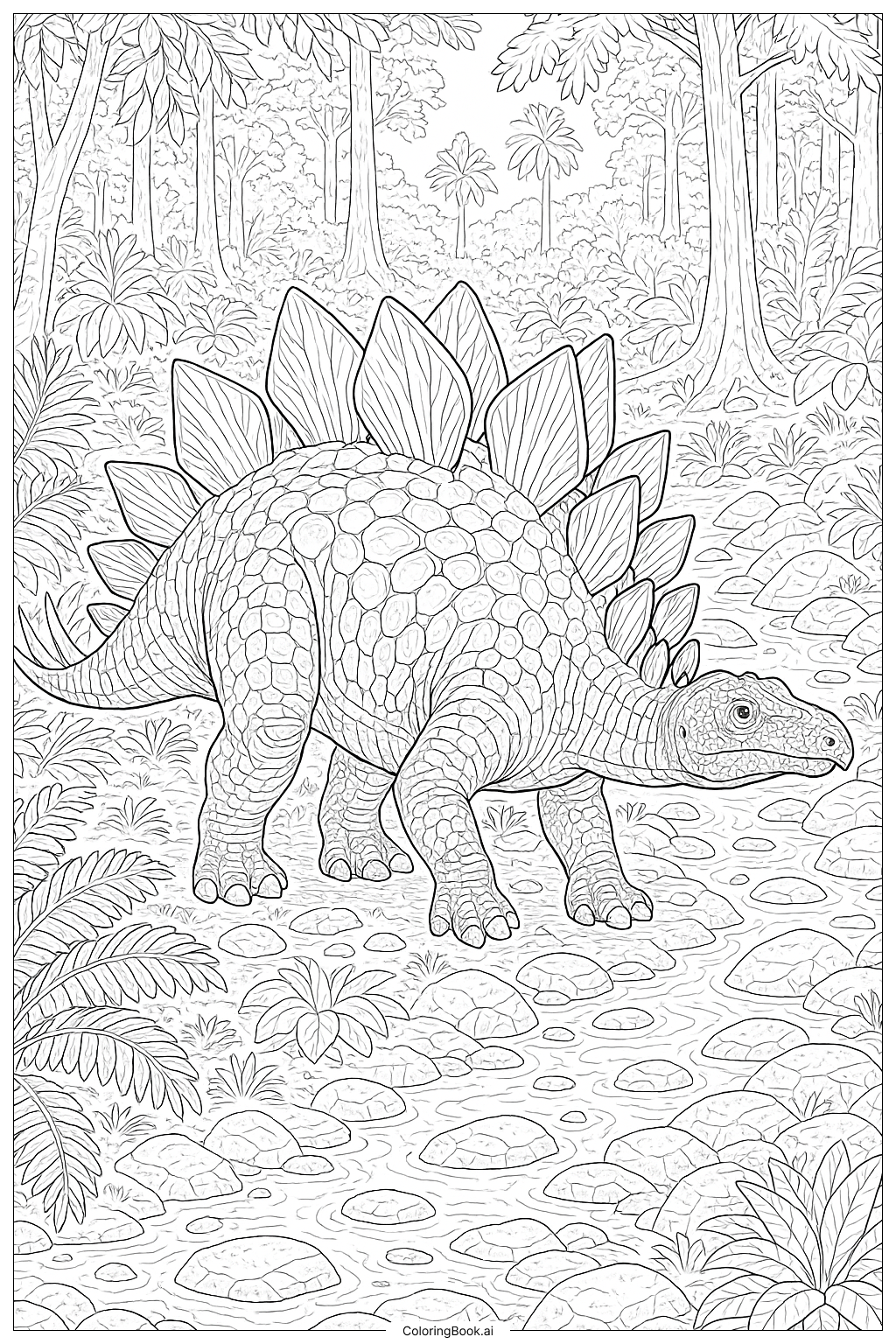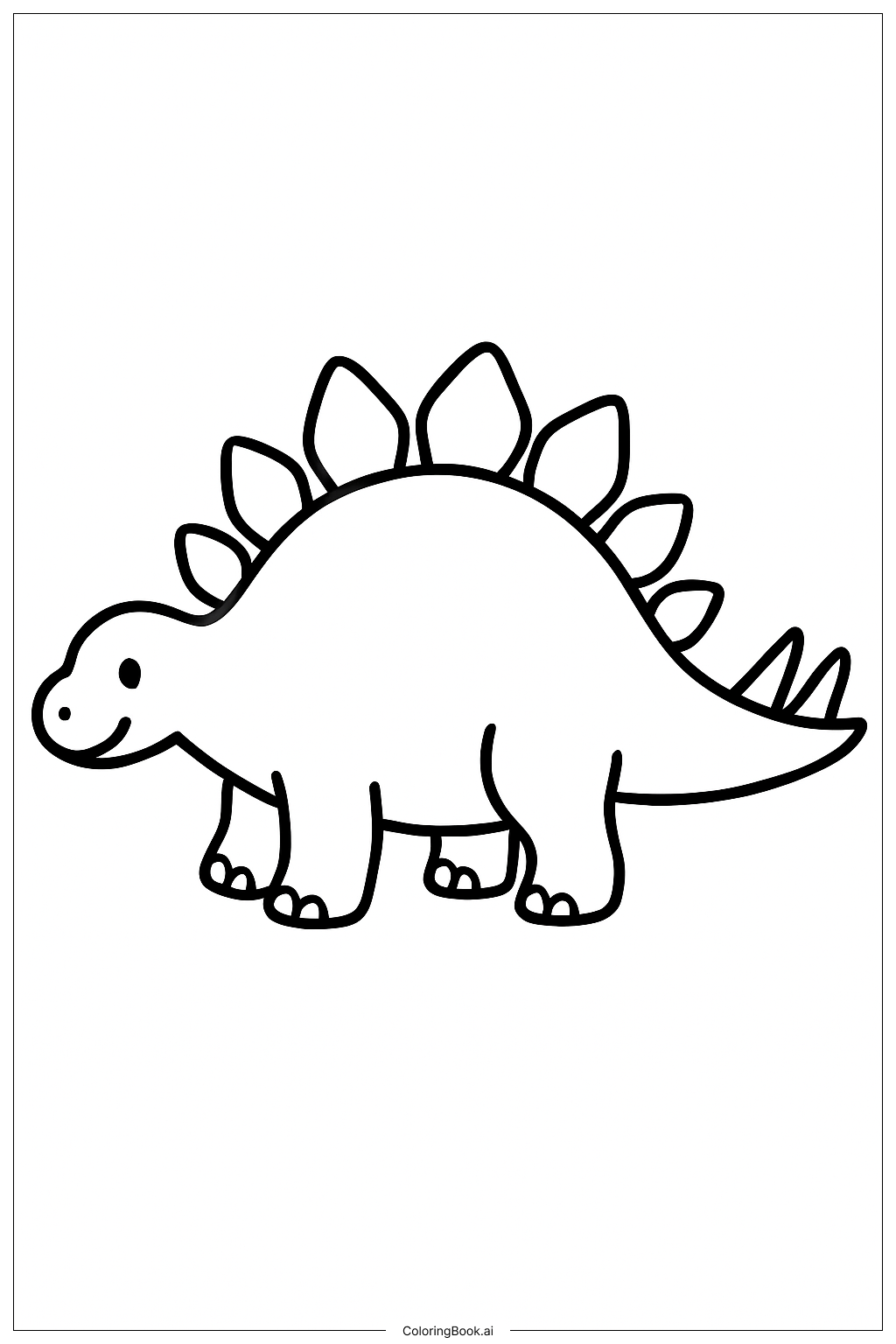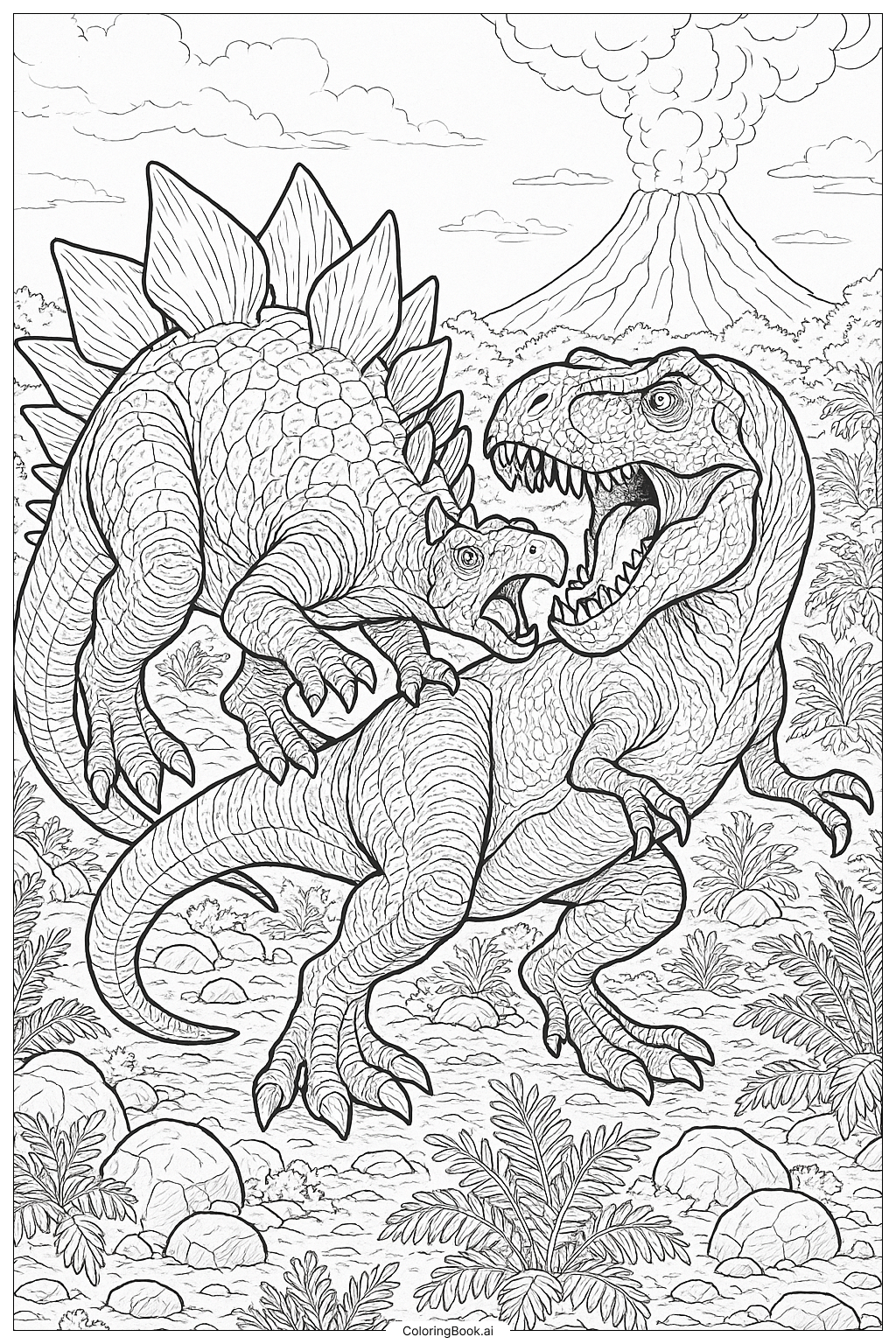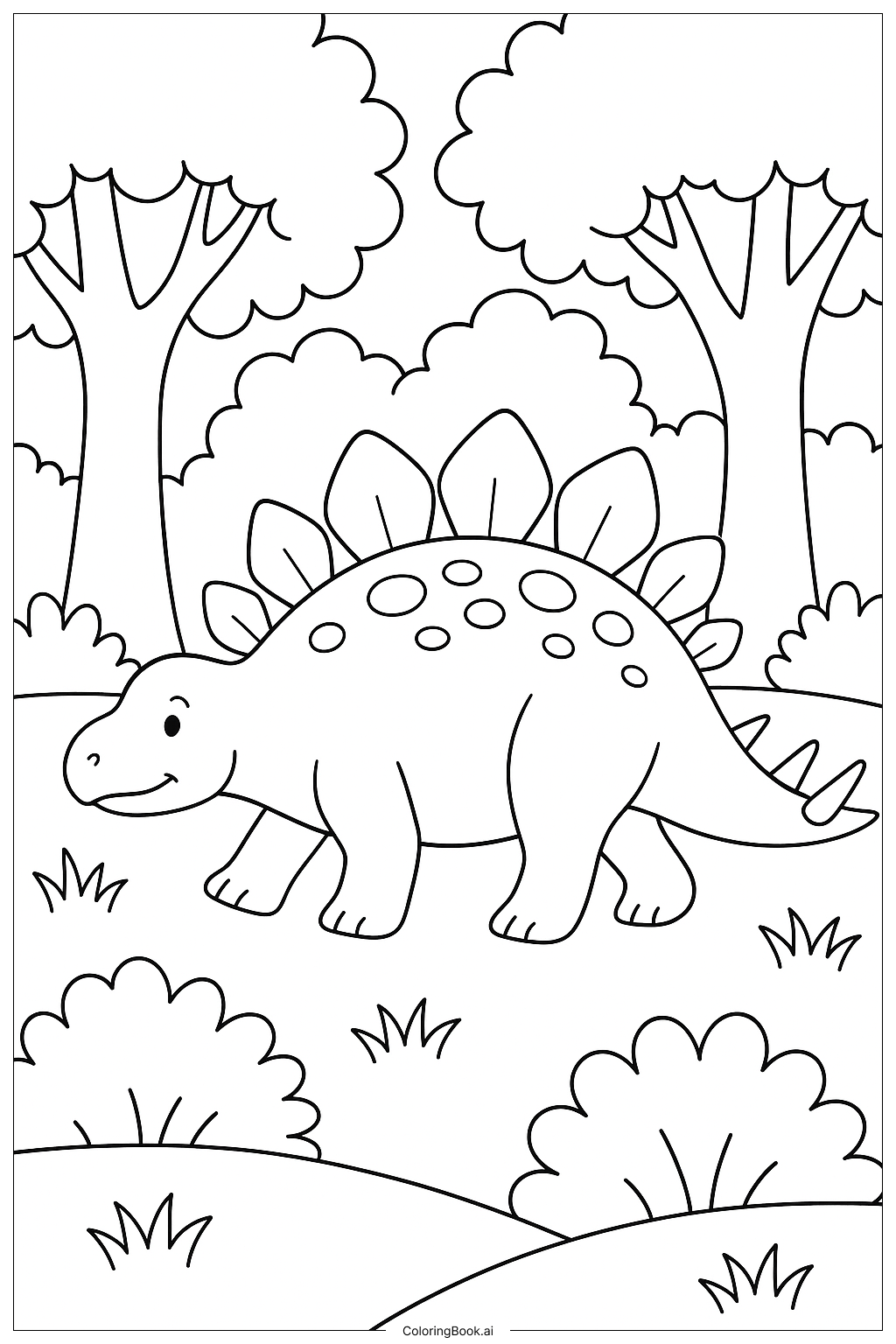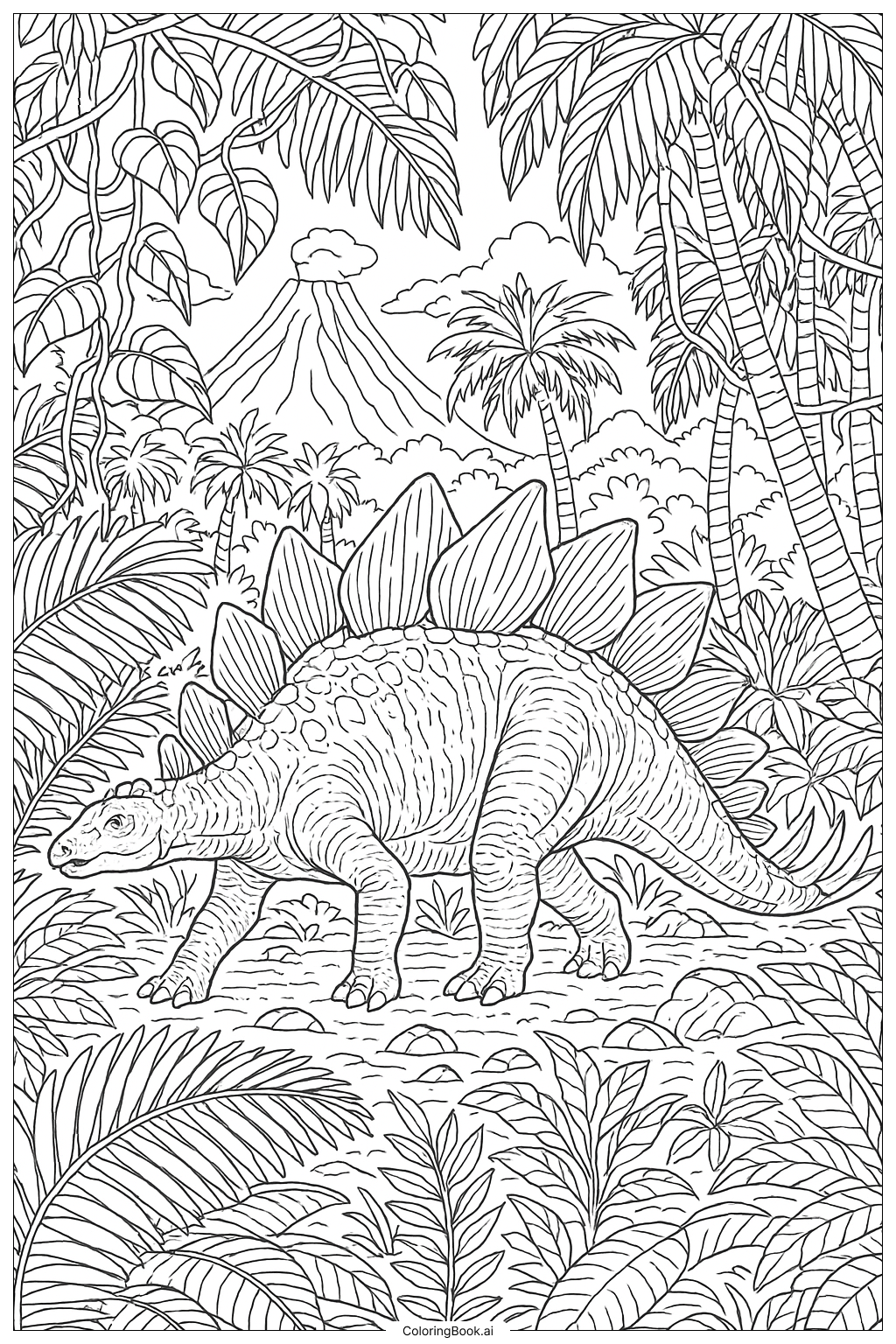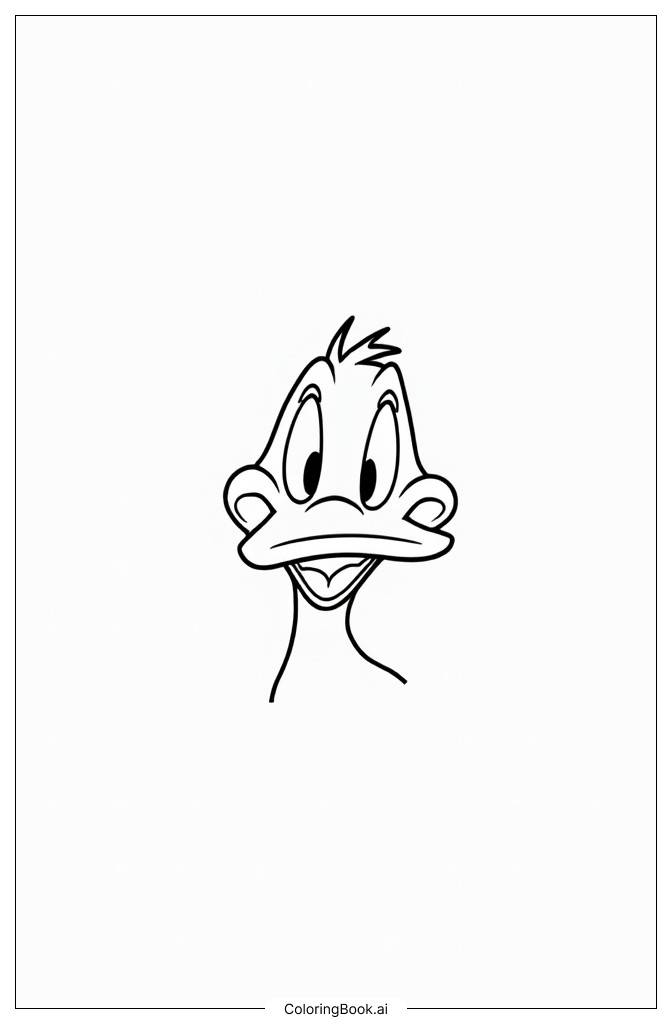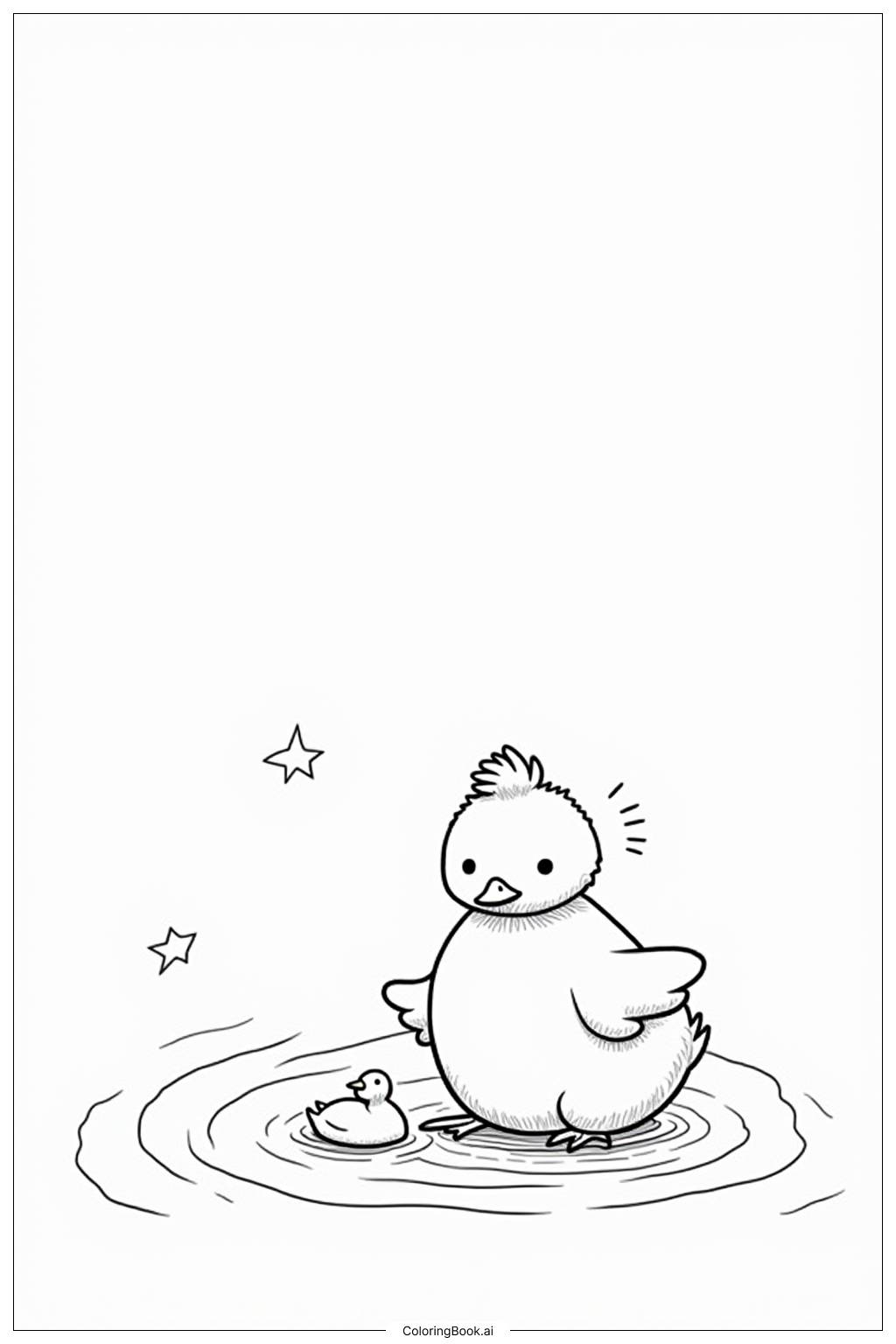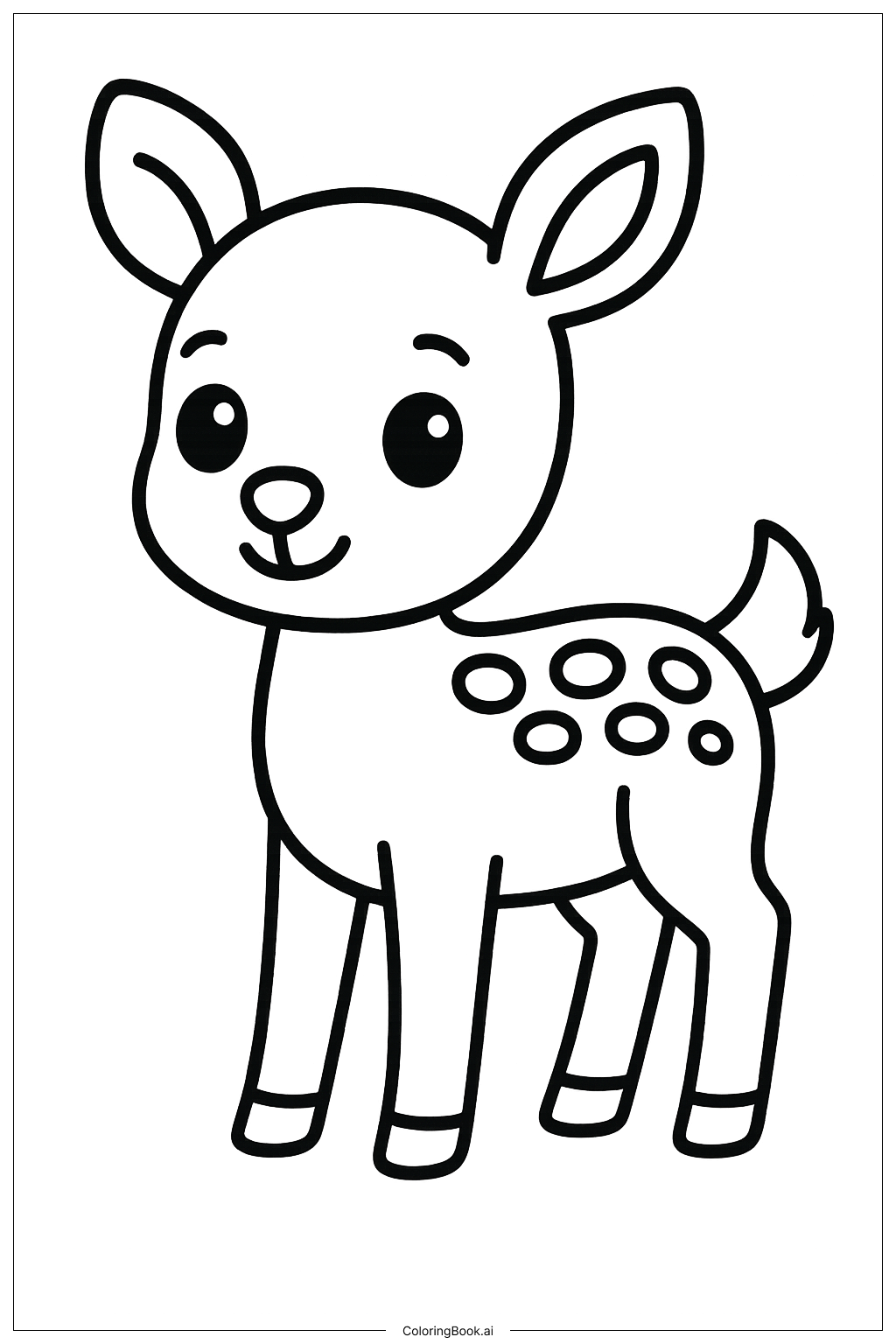Coloring tips: How to color Realistic Stegosaurus In Its Habitat coloring page well?
Use different shades of green and brown for the forest plants and trees to make the background lively. For the Stegosaurus, try using earthy colors like grey, brown, or green for its skin and a slightly different color for the plates on its back, such as rusty orange or red. For the rocks, use shades of grey and add shadows to show texture. The water can be colored with light blues and some white to suggest flowing water. Layer colors lightly and add texture with small strokes for a natural look.
Coloring challenges: Which parts are difficult to color and need attention for Realistic Stegosaurus In Its Habitat coloring page?
1. The many small scales covering the Stegosaurus can be tricky to color neatly, requiring patience and attention to detail. 2. The large plates on the dinosaur’s back have line patterns that can be challenging to color carefully without overlapping. 3. The background has many small leaves and plants that may be hard to color without going outside the lines. 4. The rocky stream includes many stones of different sizes, which can be repetitive to color and may cause color fatigue. 5. Balancing colors between the dinosaur and the busy background to keep the Stegosaurus as the main focus might be a bit difficult.
Benefits of coloring books: Advantages of drawing Realistic Stegosaurus In Its Habitat coloring page
Coloring this picture helps improve fine motor skills because it requires careful coloring inside small shapes and textures. It also boosts concentration and patience due to the detailed patterns on the dinosaur and the background. Children can learn about dinosaurs and nature while coloring, making it both fun and educational. The mix of large and small areas offers a chance to practice different coloring techniques, such as shading and layering colors. Overall, it encourages creativity and attention to detail.
